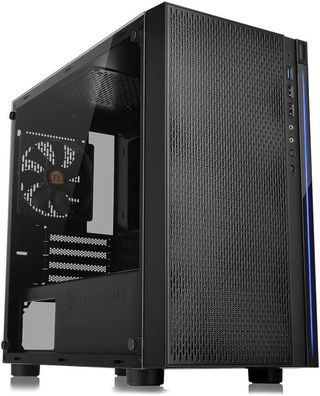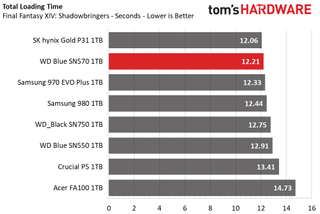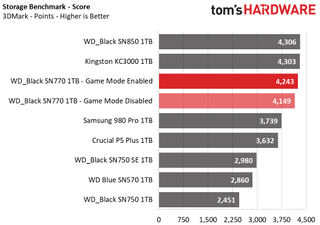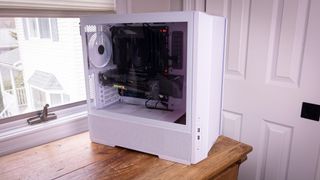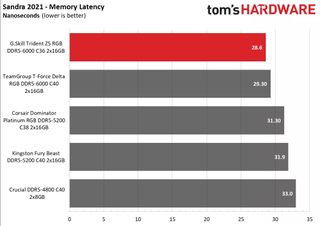While you can buy one of the best gaming PCs and just plug it in, putting together your own desktop is more rewarding. When you build a gaming PC yourself, you get total control of everything from the exact make and model of motherboard to aesthetics of the chassis and how many RGB fans you want.
By constructing your own PC from components, you will also probably save hundreds dollars over the cost of buying a prebuilt system. For example, right now, getting a desktop with similar but slightly inferior specs to our best $1,000 PC build will cost you $1,259 or more at Best Buy (opens in new tab).
To help you assemble the best PC build for gaming or productivity that you can get, we’ve created recommended parts lists for every budget: from a super-cheap sub-$500 system to an affordable sub-$1000 build to a $4,000+ dream machine for those with deep pockets.
Picking and Pricing the Best PC Builds
Why you can trust Tom’s Hardware
Our expert reviewers spend hours testing and comparing products and services so you can choose the best for you. Find out more about how we test.
Note that our best PC build recommendations are based on our component expertise, market research and testing we’ve done of the key components in each build, namely the CPU, GPU and SSD. However, because we are trying to hit price points and frequently changing these lists (as prices change), we have not tested all of the parts in each build together and some of the less performance-centric parts such as the case, motherboard and PSU may be ones that we have not reviewed.
We are also going to recommend GPUs rather than specific makes and models of graphics cards. For example, we’d recommend an RTX 407 (opens in new tab)0 (opens in new tab) Ti (opens in new tab) and link to a list of available cards rather than, for example, the Zotac RTX 4070 Ti (opens in new tab). (opens in new tab) Given frequent price and stock changes in the space, you should get whichever third or first-party card is available with the GPU you want for the best price at the time you read this.
You might notice most of our current best PC builds use Intel CPUs. This is because, right now, the cost of Ryzen 7000 CPUs, along with their expensive motherboards and pricey DDR5 RAM, make them poor budget options on the low end. On the high-end, though, the Ryzen 9 7900X3D is a great choice.
Also note that we don’t include the cost of an operating system, because you can get Windows for Free or Cheap. Nor do we include the price of peripherals such as the best gaming monitors, best gaming keyboards or best gaming mouse. And if you’ve never made a computer before, see our article on how to build a PC.
Best $500 PC Build for Gaming
For around $500, you can build a PC that has a discrete graphics card. You won’t get the fastest GPU around, but you will be able to play games at 1080p with modest settings. That’s a big improvement over relying on integrated graphics.
For the graphics card in this system, we’re going with Intel’s Arc A380. We didn’t love the card at launch, but it’s now readily available at Newegg and has been for a few months. Besides that, it’s faster than AMD’s competing RX 6400, comes with more VRAM, and most importantly it has full video encoding/decoding acceleration — including AV1 support for the future.
The card averaged 54.7 fps in our benchmarks at 1080p medium, though updated drivers may have improved things another 5–10 percent. If you want something a little faster and can expand your budget by just a few dollars, your best bet is this RX 6500 XT card (opens in new tab), which goes for $159 and can take you up to 65.8 fps in 1080p medium.
For our CPU, we’re going with Intel’s Core i3-12100F (opens in new tab), which is just over $100 but delivers plenty of pep for the price. This CPU has four cores, all of them performance cores, and a solid boost clock of 4.3 GHz. We found that it outperformed AMD’s more-expensive Ryzen 5 5600X, which costs about $60 more, in gaming workloads. The 12100F comes with a cooler in the box so we don’t have to spend money on buying a CPU fan.
If you’ve been following the processor market, you know that the 12100F has been replaced by the Core i3-13100F, which is part of Intel’s current 13th Gen Core line. But, at current prices, getting the 13100F and a 700-series motherboard that supports it out of the box would take us over the $500 price point.
The 13100F isn’t a lot faster than the 12100F as it has the same 4 performance cores and 8 threads, along with the same 5MB of L2 cache. However, the 13100F has a higher rated boost clock of 4.5 GHz as opposed to 4.3 GHz. So, if you want to spend a few dollars extra to get a 13100F, go for it, but you won’t get a lot more performance.
We also have to cut some corners and Intel H610 motherboards don’t come cheap. We went with the ASRock H610M-HDV, simply because it’s $10 cheaper than its nearest competitor. However, there’s one huge trade-off: the H610M-HDV doesn’t have an M.2 slot for PCIe NVMe SSDs. Therefore, we have to go with a 2.5-inch SATA SSD.
Our SSD is the tried-and-true Crucial MX500 at 500GB capacity. It’s fast and reliable for a SATA drive, with rated sequential read and write rates of 560 MBps / 510 MBps. When we reviewed the MX500 back in 2019, we gave it high marks for its strong endurance rating and solid performance. If we could stretch our budget over $500, however, we’d have gotten a motherboard that supports M.2 PCIe SSDs and a 1TB SSD.
One area where we didn’t compromise is on the RAM, where we got 16GB of DDR4 PC-3200 RAM in a 2 x 8GB configuration. The Silicon Power Value RAM we chose isn’t the flashiest, but it’s inexpensive and from a reputable brand. Whatever you do, don’t build or buy a gaming PC with less than 16GB of RAM.
Our case is the Thermaltake Versa H18, which comes with tempered glass side panel, something we don’t always see in a sub-$50 chassis. It also has plenty of room for extra cooling, with space for two 120 or 140mm fans (a 280mm radiator) on the front, along with a rear 120mm fan and a top 120 or 140mm fan. Our power supply is the Thermaltake Smart Series 500W, because this is the least expensive PSU from a reputable brand that we could find.
Best $800 PC Build for Gaming
If you can stretch your budget up from $500 to $800, you can enter a whole new world of gaming performance and productivity that will be good enough for some serious 1080p gaming (without ray tracing). Here we’re stepping up from a 12th Gen Core i3 to the Core i5-13400F, which has 6 performance cores, 4 efficiency cores and 16 total threads, along with a boost clock of 4.6 GHz.
With a price just over $200 and performance that allowed it to provide 152 fps on our 1080p test suite, this is our current pick for best gaming CPU, based on its value alone. In fact, the Core i5-13400F is such a good mainstream value that we recommend it for three of our builds. It also comes with a capable cooler in the box.
To go with this Intel processor, we’re using an ASRock B760M-HDV motherboard because it supports 13th Gen CPUs without a BIOS update. It’s a DDR4 board so we can save money by using DDR4 memory. It also features two M.2 slots for SSDs, with one of them supporting PCIe 4.0 drives.
Our graphics card at this price point is the AMD Radeon RX 6650 XT. At these more affordable price points, AMD offers a lot more bang for your buck than Nvidia or Intel. According to our GPU Benchmark Hierarchy, the 6650 XT slots in just below an old RTX 2080 and above Intel’s Arc A770. It delivered a strong 79.8 fps on our 8-game test suite at 1080p ultra settings and a passable 56.7 fps at 1440p ultra.
For our storage, we’re opting for a 1TB WD Blue SN570 NVMe SSD, which was just $57 at press time. The PCIe 3.0 drive promises read and write speeds of up to 3,500 and 3,000 MBps respectively. When we reviewed the WD Blue SN570, we tested it and saw that it matches up effectively against all the best PCIe 3.0 SSDs, coming within a few milliseconds of the SK hynix Gold P31 on our game load time test.
We’re going with TeamGroup’s inexpensive DDR4 RAM here, and we’re stepping up to a 600W version of the Thermaltake Smart power supply so we can support our higher wattage CPU and GPU.
Our case is the Thermaltake S100. We like the sleek, gunmetal gray and black color scheme, along with the the steel material and magnetic tempered glass side panel. It comes with a rear exhaust fan but has room for up to five 120mm case fans and a 280mm radiator on the top or front.
Best $1,000 PC Build for Gaming
If you can stretch your budget up to around $1,000, you can build a PC with the ability to play games really well at 1080p and competently at 1440p. The best GPU option in this price range right now is the AMD Radeon RX 6750 XT, which goes for as little as $409. This card’s GPU can reach all the way up to 2.6 GHz as a boost click, taking advantage of its 12GB of speedy GDDR6 VRAM.
Inn our 8-game rasterization test suite at 1080p ultra settings, the 6750 XT offered an impressive frame rate of 105.3 fps while delivering a still-strong 78.2 fps at 1440p with ultra settings. At this price point, don’t expect to do much ray tracing, however. The card managed 34.6 fps at 1080p ultra with ray tracing on, a number which dropped to just 21.7 fps at 1440p.
Our recommended CPU for this build is the same Core i5-13400F that we are using on the $800 and $1,500 builds. Why spend hundreds more on a faster CPU when we want to put the money into a better GPU at these price points? Similarly, we’re sticking with the ASRock B760M-HDV motherboard we used on the cheaper build.
We’re also sticking with 16GB of DDR4-PC3200 RAM here. There’s no real need to go faster or increase the capacity at this price point. Using DDR4 saves us money over DDR5.
For storage, we’re stepping up to a faster, PCIe 4.0 NVMe SSD in the form of the WD Black SN770. This impressive and affordable drive promises read and write transfers of 5,150 MBps and 4,900 MBps respectively and, at press time, cost just $74. When we tested the drive for our WD Black SN770 review, we noticed that it was neck and neck with more expensive drives such as the Kingston KC3000 and WD Black SN850.
We’re going with the Phanteks Eclipse P300A as our chassis of choice. When we reviewed the P300A, we lauded its great air flow, ease of building and attractive looks. The case has room for up to two 140mm front fans, a single 140mm top fan and a single 120mm rear fan, which is more than enough case cooling for this budget.
Finally, we’ve stepped up to a 750-watt power supply and we’re going with Corsair CX750M, which is 80+ Bronze certified and semi-modular. You can get a modular PSU or one that’s 80+ Gold certified for a bit more, but that’s money you don’t need to spend at this price point.
Best $1,500 PC Build for Gaming
As we step up to a build that should be brilliant at 1080p gaming and really strong for 1440p gaming, we’re looking at around a $1,500 budget, depending on the current prices on graphics cards. We recommend going with a Radeon RX 6950 XT at this price point.
At press time, 6950 XT cards selling for as little as $679. In our GPU benchmarks hierarchy, AMD’s card matches the super-expensive RTX 4080 achieving average frame rates of 141.5 fps at 1080p Ultra and 118.3 fps at 1440p while the $1,200 RTX 4080 hit 141.3 fps at 1080p and a (slightly stronger) 130.1 fps at 1440p.
The story changes when you use ray tracing, where the RX 6950 XT delivers a playable 61.5 fps at 1080p, but is far behind Nvidia competitors. However, for a system in this price range, you shouldn’t expect to run ray tracing at 2K resolution or higher.
We’re sticking with the Core i5-13400F from our $1,000 build, because we’re putting more money into the GPU. The Core i5-13400F has 6 performance cores, 4 efficiency cores and 16 threads. It can’t be overclocked and tops out at a boost speed of 4.6 GHz, but at this price, we’re not looking to overlock anyway. Intel’s processor comes with its own cooler in the box so you don’t need to pay for a third-party one.
We’re going with the $149 ASRock B760M Pro RS WiFi as our motherboard, because it provides a step up from the B760M-HDV motherboard in our $1,000 build, giving us built-in Wi-Fi 6E connectivity. It also has two PCIe 4.0 M.2 SSD slots.
With our increased budget, we’re stepping up to 32GB of RAM from the well-known and respected Patriot Viper Steel series. We’re also going to the very-fast SK hynix Platinum P41 at a 2TB capacity. This M.2 drive promises sequential read and write speeds of 7,000 and 6,500 MBps respectively. It’s near the top of the stack of PCIe 4.0 SSDs, offering strong performance that’s only a few points behind the industry-leading Samsung 990 Pro.
Our chassis of choice is the Phanteks P360A, which offers excellent thermals, a premium tempered glass side panel and two included RGB fans. Our power supply is a 750-watt Thermaltake Toughpower 750W. This 80 Plus Gold certified PSU packs enough power to support our GPU with plenty of juice to spare. However, it’s not fully modular, with some of the wires being built-in.
Best $2000 PC Build for Gaming
At a current price of $2,000, our high-end gaming PC build should provide enough performance to play games at 1440p ultra settings with strong frame rates, and 4K ultra with playable frame rates. The system gets its GPU muscle from an RTX 4070 Ti, which is currently in the $799 to $899 price range. The card is backed by the Intel Core i5-13600K, one of Intel’s Raptor Lake processors, which is one of the best CPUs for gaming.
In our tests, an RTX 4070 Ti card achieved an average frame rate of 76 fps at 4K resolution with Ultra settings. If you drop down to 1440p resolution or 1080p, those numbers jump to 121 or 139 fps, respectively.
Nvidia cards do much better at Ray tracing so the RTX 4070 Ti is a great choice if that matters to you. The 4070 Ti delivered 60 fps at 1440p Ultra with ray tracing in our tests while AMD’s similarly-priced RX 7900 XT could only do 45 fps (and if you want to try 4K without upscaling, that drops to 30 and 23 fps, respectively).
The Intel Core i5-13600K has 6 performance cores and 8 efficiency cores, which make it capable of using 20 threads at once (two for each P core). It carries a top boost frequency of 5.1 GHz and can be overclocked to higher frequencies than that.
We easily overclocked it to 5.6-GHz where it averaged 199 fps on our Windows 11, 1080p gaming suite (which uses an RTX 4090 card). That’s better than every AMD chip on the market, including the Ryzen 7 5800X3D and only a few frames behind the Core i7-13700K, which costs $129 more.
In order to make the most of our CPU overclock, we need a Z790 motherboard that supports DDR5 RAM and the Gigabyte Z790 Aorus Elite AX fits the bill. This full ATX board has 16 + 1 + 2 power phases and snazzy MOSFET heatsinks. It also comes with Wi-Fi 6E built-in, 2.5 Gbe Ethernet and support for up to three M.2 SSDs.
Our CPU doesn’t come with a cooler in the box and we plan to overclock it to more than 5-GHz anyway, so we’re using the DeepCool LT720 (opens in new tab), a 360mm AIO liquid cooler, to keep its temperature down. We’re using 32GB of G. Skill’s Trident Z5 RGB DDR5-6000 RAM. The Trident Z5 kit tops our list of best RAM, thanks to its tight-timings, fast performance and overclocking potential. In our tests, the Z5 also had the lowest memory latency of its competitors.
We’re going with SK hynix’s Platinum P41 SSD, because it’s just a step behind the industry-leading Samsung 990 Pro, but costs much less at the moment.
Our case for this build is the $120 Lian Li Lancool 216. When we reviewed the Lancool 216, we praised its included dual RGB 160mm front and single 140mm exhaust fans, excellent cable management and attractive looks. There’s also plenty of room for a top-mounted radiator that’s up to 360mm.
To power all these high-end components, we’re using a Corsair RM750e PSU which is 80+ Gold certified and fully modular.
Best $4000+ PC Build for Gaming
For our super-high-end build, we’ve got a system that’s capable of playing high-end games in 4K at ultra settings and delivering smooth ray tracing. This is made possible thanks to the Nvidia RTX 4090 card, which is by far the fastest card on the market — and also the most expensive, by an equally large margin.
This is our dream machine build, so price is a lesser consideration on parts like the 4090, but the good news is prices are starting to come down. Recently, 4090 cards cost over $2,000, even though the Founder’s Edition RTX 4090 card carries a $1,599 MSRP. Right now, there’s a MSI card available for $1,729 (opens in new tab) which is one of the lowest prices we’ve seen since launch.
On our tests, the RTX 4090 averaged 112 fps playing a suite of games at 4K. That’s a huge improvement over the next-best card, the Radeon RX 7900 XTX, which only hit 90 fps. In ray tracing, the gap widens a lot more, with the 4090 averaging 58 fps, the 4080 sits at 41 fps, and the fastest card from AMD, the 7900 XTX, gets just 30 fps.
Our CPU is AMD’s Ryzen 9 7900X3D, which offers faster gaming than any Intel CPU on the market, including the Core i9-13900K. It has a whopping 140MB of cache, thanks to AMDs innovative 3D V-Cache and it boasts 12 full-power cores and 24 threads, which is more regular cores than the 13900K’s set of 8 (to go with 16 E-Cores).
On our tests, the Ryzen 9 7900X3D averaged 6 percent higher frame rates at 1080p than the 13900K. AMD’s Ryzen 9 7950X3D is a little bit faster, but at press time, was selling at close to $1,000, rather than its $699 MSRP. Meanwhile, the 7900X3D was less available for less than its $599 MSRP.
We’re using an Asus ROG Strix X670E-E motherboard, which comes with built-in Wi-Fi 6E, four M.2 slots for storage and 18+2 power stages. To cool the Ryzen 9 7900X3D, we’re using a 360mm DeepCool LT720 AIO cooler.
Because we’re fattening our budget for this build, we’re going with some speedy DRAM in the form of G.Skill’s Trident Z5 RGB DDR5 , which operates at up to 6,400 MHz. In our review of the G.Skill Trident Z5, we lauded the kit’s strong performance and excellent overclockability. In our table, we are linking to a 32GB kit (2 x 16GB DIMMs as that is the highest capacity it is sold in. However, we recommend buying two of these kits so you can have 64GB of RAM.
Instead of chasing minor performance gains from the slightly-faster Samsung 990 Pro, which tops out at 2TB, we’re going with a 4TB capacity of the WD Black SN850X, which goes for a very reasonable $399 right now. As you can see, the 2TB capacity of this drive is only slightly behind the 990 Pro, but having a 4TB drive is a huge luxury, particularly if you plan to install a lot of games.
Our chassis choice is the Lian Li Lancool 3 (opens in new tab), which is the case I used for my most recent build. This is a behemoth with a ton of flexibility. It comes stocked with three 140mm RGB front fans and a non-RGB rear fan, along with room for three additional rans (or a radiator at the top) and three more at the bottom. It has glass panels that don’t need to be unscrewed but simply swing out on both the left and right sides. It also has excellent cable management and room for tons of drives if you want them.
With these high-end components, we don’t want to skimp on the power supply, and having something that’s fit for a future graphics card upgrade makes sense. We’re going with a full 1000-watts of power and the Corsair HX1000. This power supply is 80+ Platinum certified and fully modular.
Finding Discounts on the Best PC Components
To find savings on components of all types, check out our lists of the best PC hardware deals, along with the latest Newegg promo codes, Corsair coupon codes and Best Buy promo codes.
